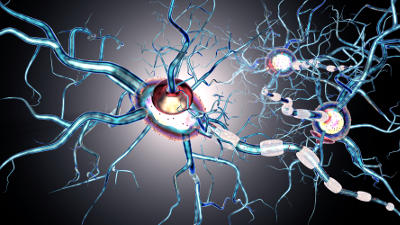Using AI to control energy for indoor agriculture
30 September 2024
Published online 2 August 2017
New insights into the workings of the gene associated with degenerative brain diseases provide potential targets for treatment.

The incurable disease is inherited in 10 percent of cases, mostly down to the gene known as “chromosome 9 open reading frame 72,” or C9orf72.
Everyone has this gene, but recent studies show that when the gene’s nucleotide pattern is repeated in excess — tens to thousands of times over — it causes nerve cell breakdown and leads to muscle weakness and atrophy.
Now, a team of molecular biologists at the University of Sheffield in the UK and Zewail City of Science and Technology in Egypt has discovered why1.
Experiments in mouse models on cells from ALS patients revealed a transcription defect known as an R-loop. In contrast to the standard double helical DNA structure, R-loops are three-stranded. The displaced single strand is left vulnerable to damage. Accumulation of these R-loops leads to broken DNA and genomic instability.
Further, they show how the gene over-activates the normally healthy breakdown of unnecessary cellular components, a process known as autophagy. In particular, researchers identified how this degrades a certain protein that is essential for the accumulation of repair proteins to the site of DNA damage.
“The outcome is more DNA damage and cells less able to repair the damage,” says lead author Sherif El-Khamisy, research director at both Sheffield University and Zewail City’s Center of Genomics. “If we can modulate and manipulate the degradation process, we can take away the pathology, the cell death.”
His lab identified pathways to modify gene expression and slow down the progression of ALS. Modifications such as these could also prove significant in prolonging the lives of those with other neurological diseases in which C9orf72 is implicated.
doi:10.1038/nmiddleeast.2017.119
Stay connected: